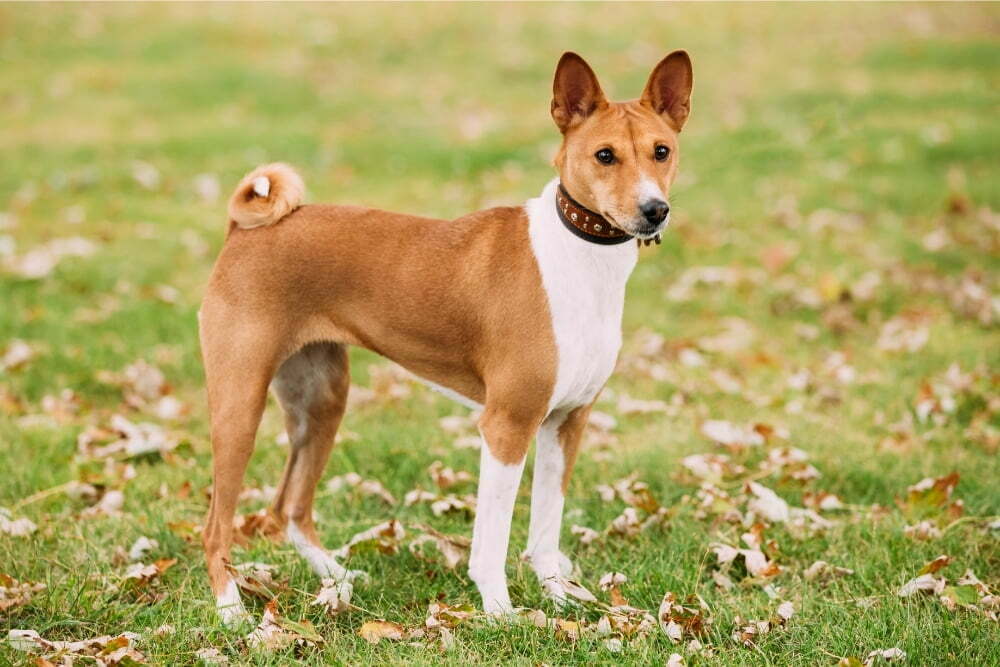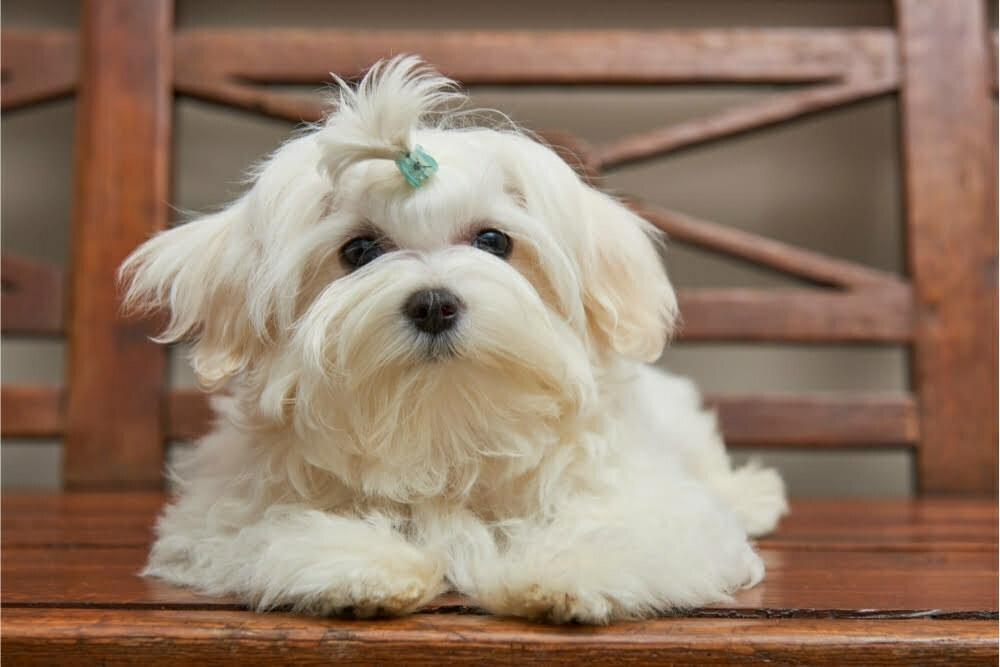Some dogs seem to smell the moment they step out of the groomers, while others rarely need a wash or bath.

There are a few different reasons why dogs end up smelling bad. Some of these issues are chronic, and others are just circumstantial.
Often, dogs stink when they roll in something bad like fox poop or they get sprayed by skunks, for instance. However, for some dogs, the smell is to do with their skin and their fur.
Oils secreted from the dogs’ glands are often to blame for smelly dogs. These oils can be triggered by allergies, stress, dietary changes, or temperature changes.
Other dogs smell because they produce lots of dander. Dander is dead skin and fur flakes that can stick to your dog and your furniture. Dander creates a stale, musty smell that lingers in your home, on your dog, and on your skin.
Another thing that makes dogs stinky is water. If you don’t dry them off properly, you get that hideous, wet dog smell. Dogs with long fur or double coats are especially prone to that damp smell.
Some dogs, however, don’t shed, which means they produce much less dander than other dogs. Often, these dogs smell much better than their counterparts.
Here is a list of dogs to consider purchasing if you’re opposed to stinks.
- Basenji – these dogs are short-haired working dogs with lots of energy. They’re quite uncommon, but they smell far better than other breeds. They are like cats in that they are quite fastidious in their cleaning habits.
- Bichon Frisé – Fluffy, small, and ideal companion pets, Bichon Frisé dogs have fairly high grooming needs. You’ll need to brush them frequently or take them to a groomer to prevent matting. That being said, they’re still good-smelling dogs.
- Chihuahuas – These tiny dogs have tiny, short fur, which means that they don’t smell very much. They do shed, but it doesn’t usually present too much of a problem because they are so small.
- Doberman Pinschers – These large, imposing dogs have short, smooth coat that keeps them clean and smelling fresh. They don’t shed very much despite their massive size.
- Whippets – These small, sleek dogs are probably the least smelly dogs we’ve come across. They have short, sleek fur that isn’t prone to shedding.
What is the healthiest non-shedding small dog?

Before we dive in, it’s important to remember that non-shedding is a bit of a misnomer. All dogs shed dead fur in the same way we shed dead hair.
Some dogs shed a lot less than others. It is these dogs that we tend to refer to as ‘non-shedding’ dogs.
In terms of health, purebred dogs almost always have some health risks. It comes from decades of in-breeding and breed standard regulations.
If you’re truly after a healthy, hardy dog, then your best option is to go for a mutt or mixed breed. Vets agree that these dogs tend to be less prone to genetic conditions and more resistant to illness.
That being said, here are our top 5 healthier, small dogs that don’t shed so much.
- Maltese – These fluffy little puppies are a small, long-haired breed famed for their beautiful flowing locks.
Even though these dogs have long fur, they only have one coat, which means that they shed extraordinarily little. In fact, Maltese dogs have fur that is more similar to human hair than other dog furs.
In terms of health, these dogs tend to live up to about 15 years and are considered generally healthy dogs.
- Miniature Poodles – These dogs are synonymous with the terms ‘non-shed’ and ‘hypoallergenic.’ Their beautiful curly coats stay on their bodies, and they often smell much better than other dogs.
On the health front, mini poodles aren’t as healthy as some other breeds, but they do have a long lifespan.
- Chinese Crested Dog – These lazy little dogs are identified by the unbelievably small amount of fur on their bodies. Most tend to only have fur on their head, tail, and paws, making them ideal if you want a non-shed dog.
In terms of health, they are considered generally healthy physically and mentally. They are pretty lazy and inactive dogs, so they don’t tend to get into accidents.
- Miniature Schnauzers – These dogs are often termed as ‘the most average dog’ because they have an average temperament, health, and activity needs.
They have a fairly coarse coat that doesn’t shed very much at all. You do need to groom it regularly, however.
- Silky Terriers – Perhaps one of the less common dogs at the dog park, silky terriers look fairly similar to Yorkshire terriers.
Silky terriers have a wonderful, silky coat that hardly sheds at all. They are perfect for people with allergies.
In terms of health, these dogs are generally healthy. Like all purebreds, they can be prone to genetic conditions, but they bear up better than other breeds.
What is the biggest hypoallergenic dog?
First things first, there is no such thing as a truly hypoallergenic dog. We tend to refer to dogs that don’t shed so much as hypoallergenic because they don’t trigger allergies as much as other dogs.
In reality, all dogs shed, and all dogs produce the protein that triggers allergies. It’s just that dogs that shed less don’t cause so many issues.
Amongst the dogs that are typically considered hypoallergenic, the largest in terms of height is probably the Afghan Hound. These majestic, long-haired dogs hardly shed, but you do need to keep on top of their beautiful coats.
In terms of weight, the largest is probably a Samoyed or a giant schnauzer. Both dogs tend to top off at about 60-65 pounds.
Giant schnauzers have wiry and dense coats that stick out from their bodies. Like their miniature version, these dogs are extremely low shedders.
Samoyeds have a thick double coat that sheds more than other hypoallergenic dogs. The fur does not carry the allergen protein as much as other breeds.
